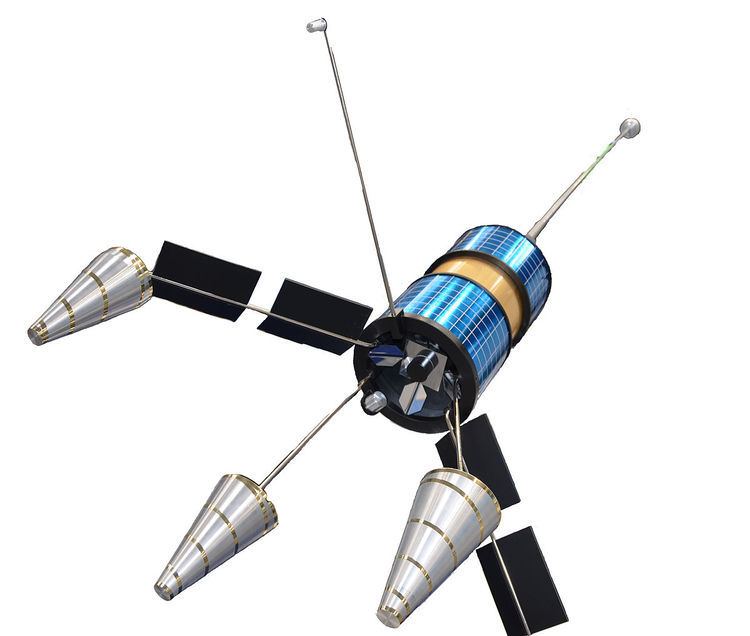Country of origin Russia Design life 5 years | Applications Communication | |
 | ||
Manufacturer NPO Prikladnoi Mekhaniki Operator RKA (Until 1996)Gonets SatCom (1996-Present) Launch mass 233 to 280 kilograms (514 to 617 lb) | ||
Gonets (Russian Гонец, Messenger) is a Russian civilian low Earth orbit communication satellite system. It consists of a number of satellites, derived from Strela military communication satellites. The first two satellites, which were used to test and validate the system, were launched by a Tsyklon-3 carrier rocket from the Plesetsk Cosmodrome on 13 July 1992, and were designated Gonets-D. The first operational satellites, designated Gonets-D1, were launched on 19 February 1996. After launch, the first three satellites were given military Kosmos designations, a practice which was not continued with the other satellites.
Ten operational satellites and two demonstration spacecraft have been placed in orbit. A further three were lost in a launch failure on 27 December 2000. A new series of modernised Gonets satellites, Gonets-D1M, will supplement and eventually replace the satellites which are currently in orbit. A single first D1M satellite was launched by a Kosmos-3M rocket on 21 December 2005. A second D1M satellite was launched by a Rokot carrier rocket on 8 September 2010.
Gonets was originally a Russian Federal Space Agency programme, however in 1996 it was privatised, and it is now organised by Gonets SatCom, which is controlled by ISS Reshetnev.
User characteristics
As of 2016, the Gonets orbit group comprises 12 second-generation spacecraft “Gonets-M” and 1 first-generation “Gonets-D1”. The orbital group performs the task of direct communication with subscribers at any point of the globe. With such a number of spacecraft in the Gonets orbit group, the system provides communication with waiting time characteristics as indicated in the following table.
Technical characteristics of subscriber terminals 0.3 - 0.4 GHz
